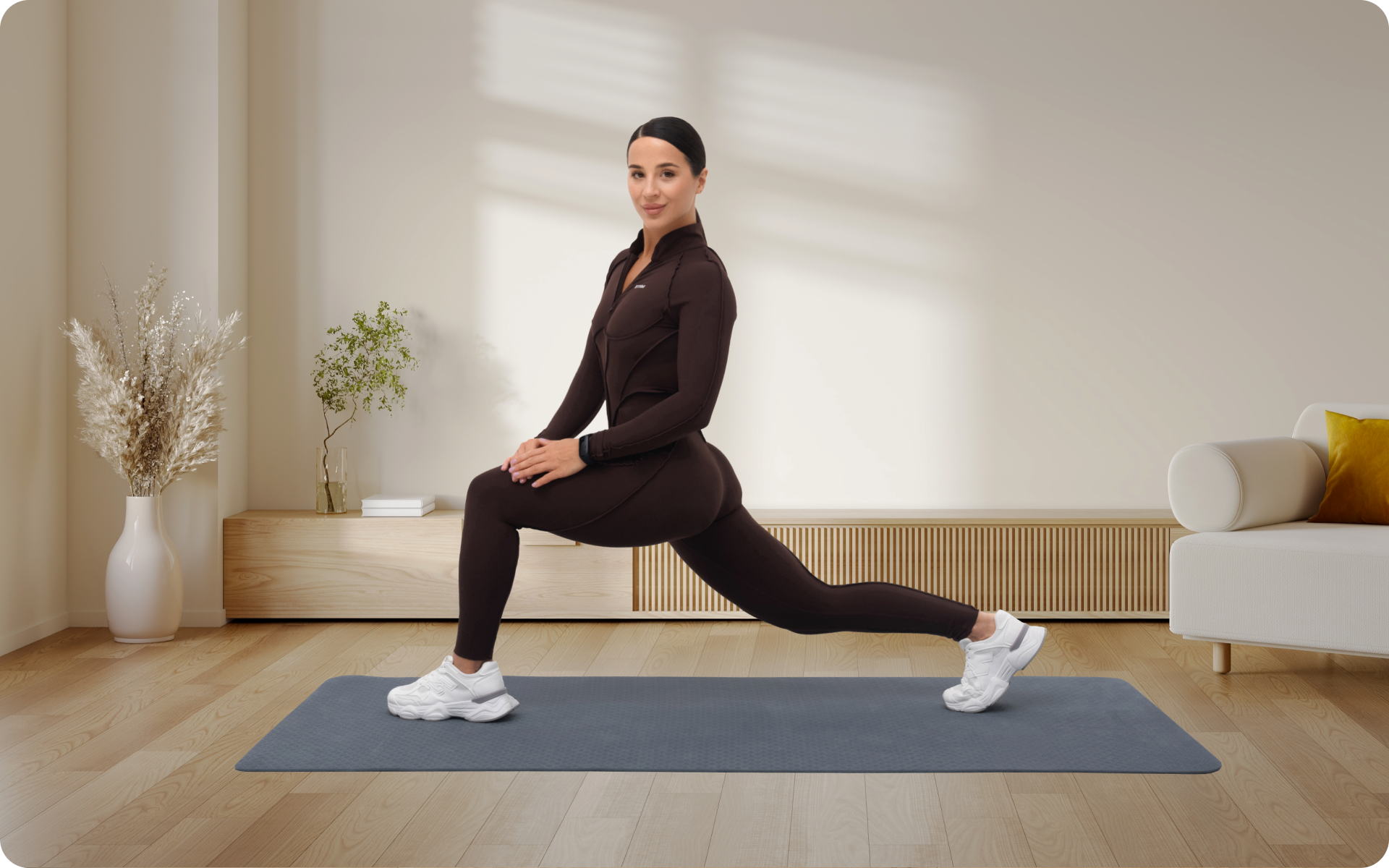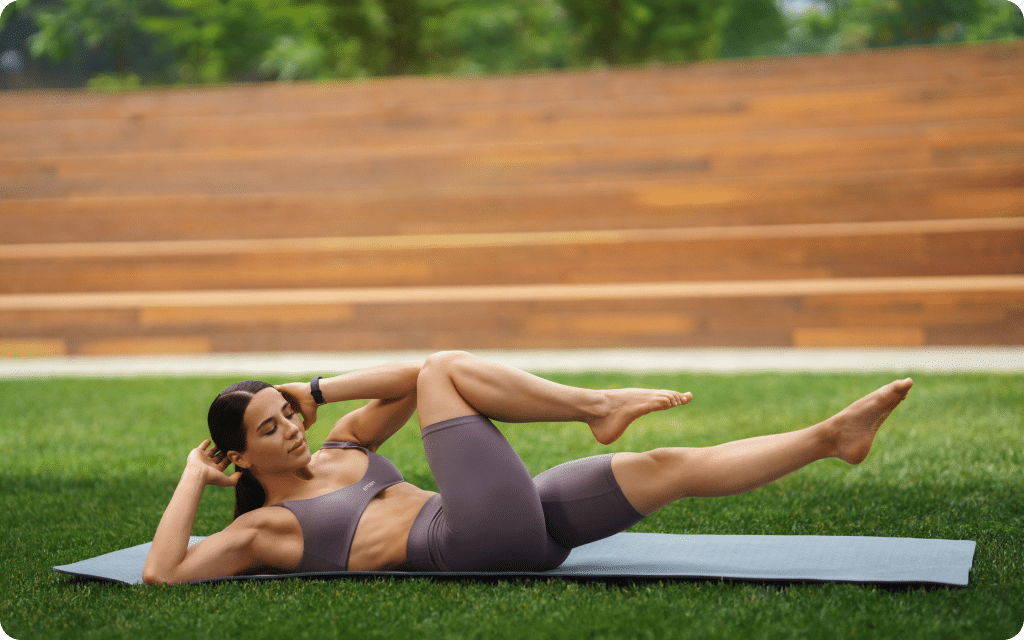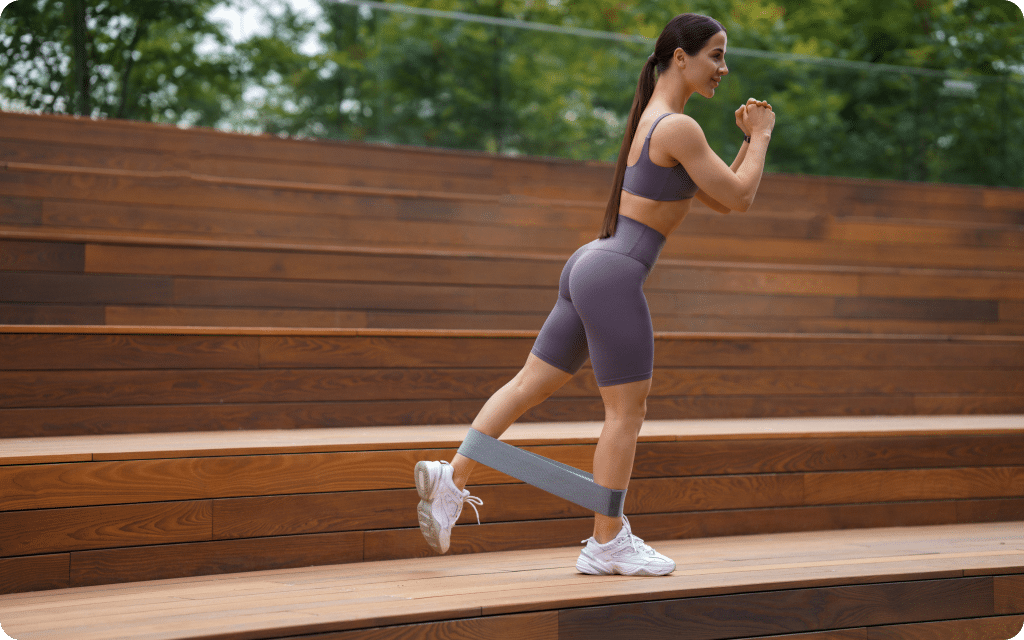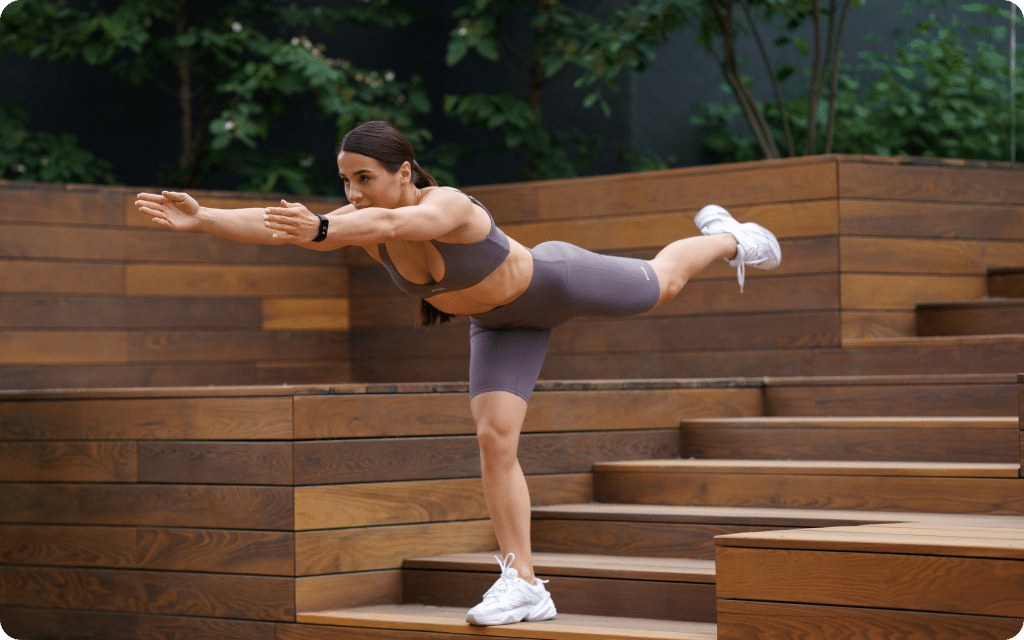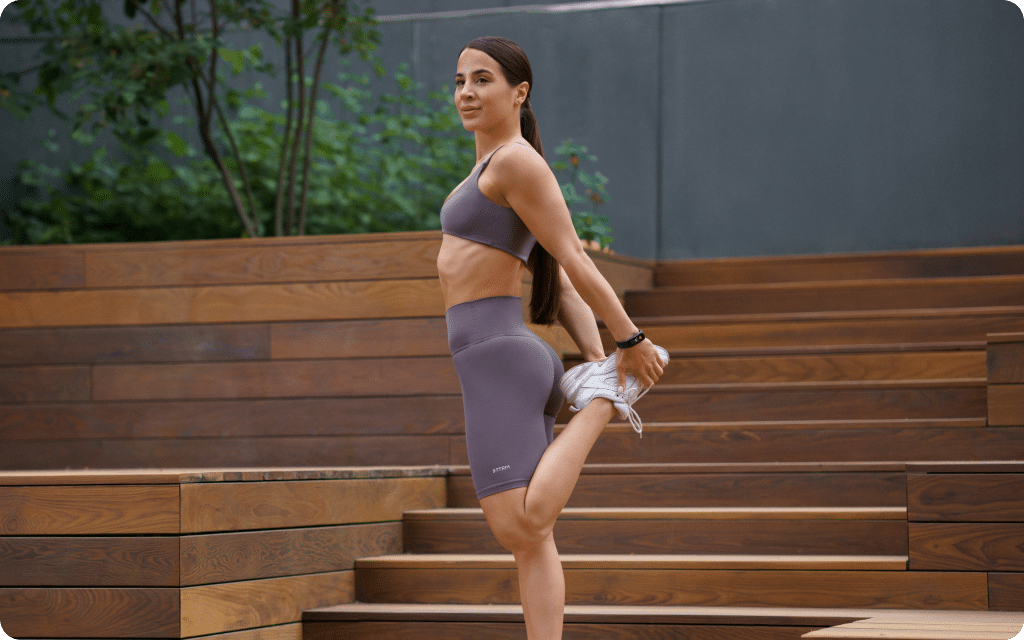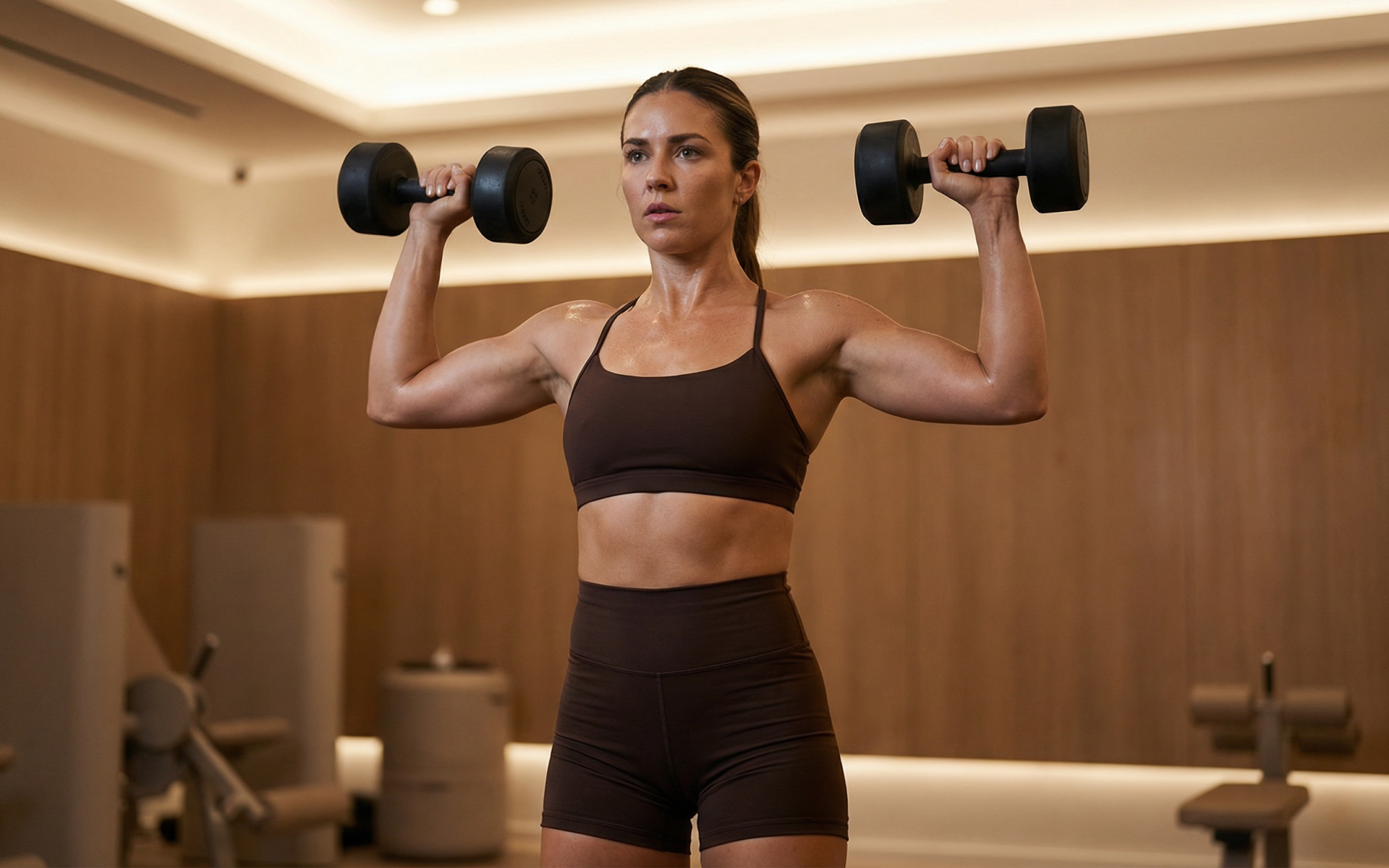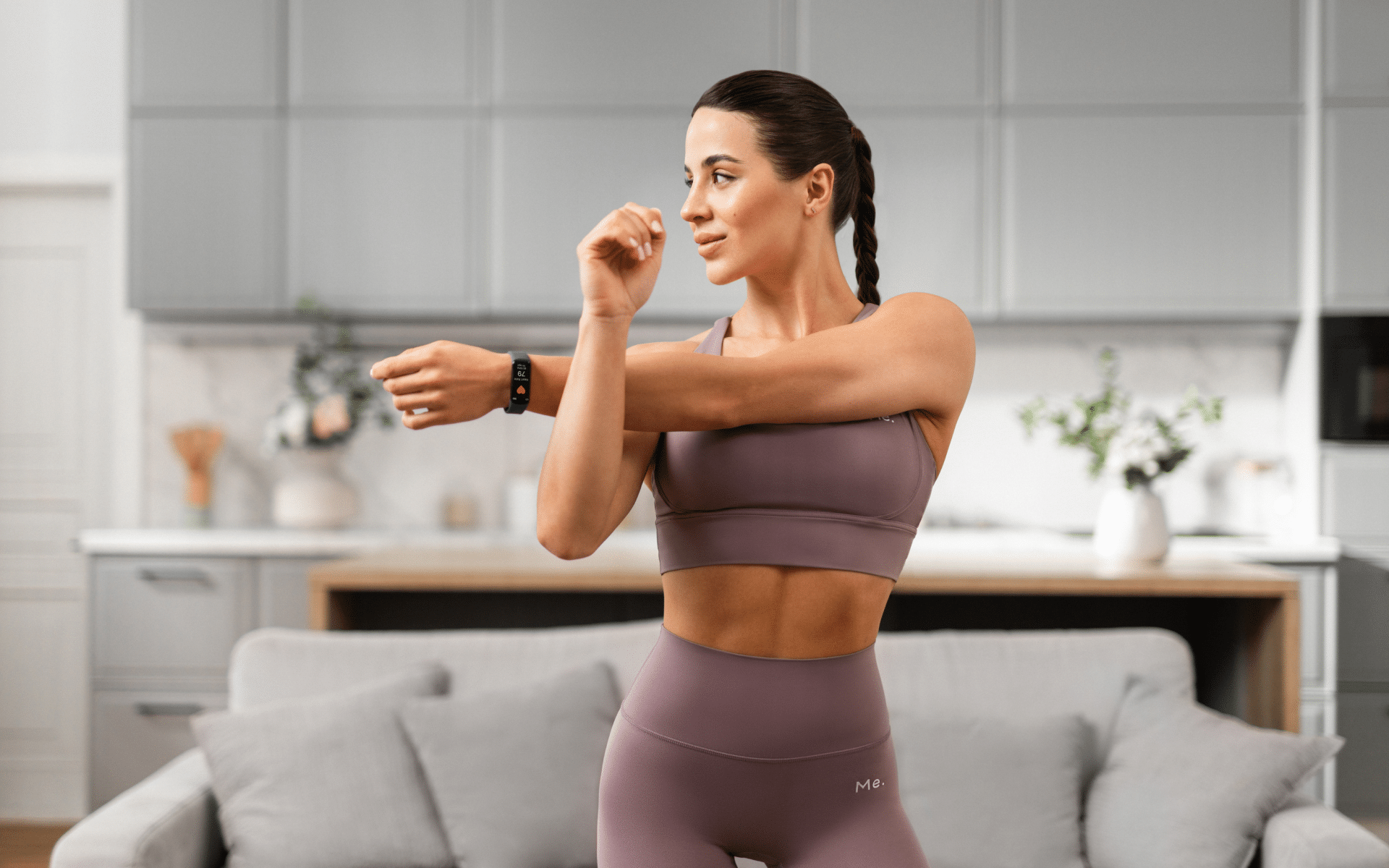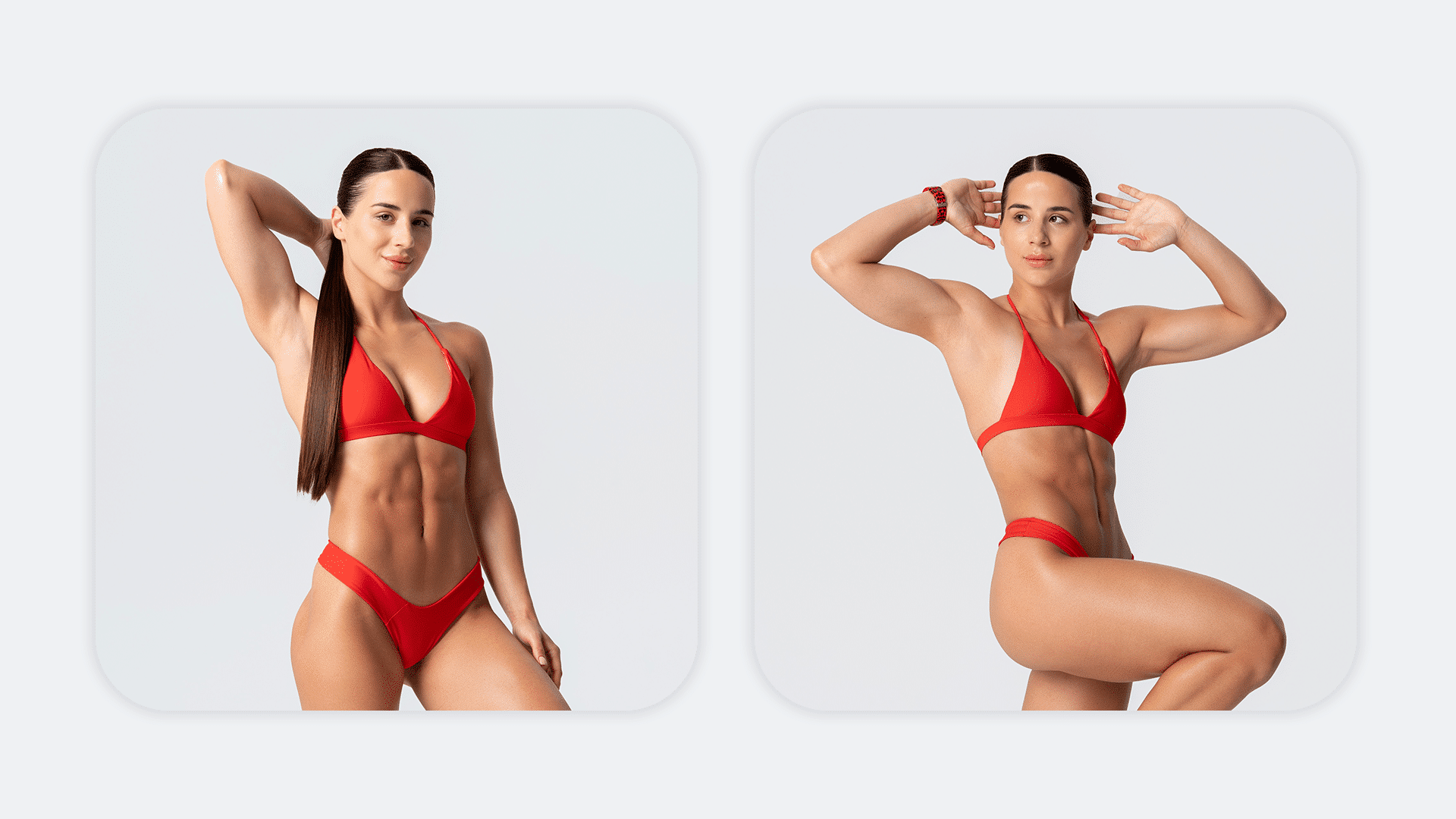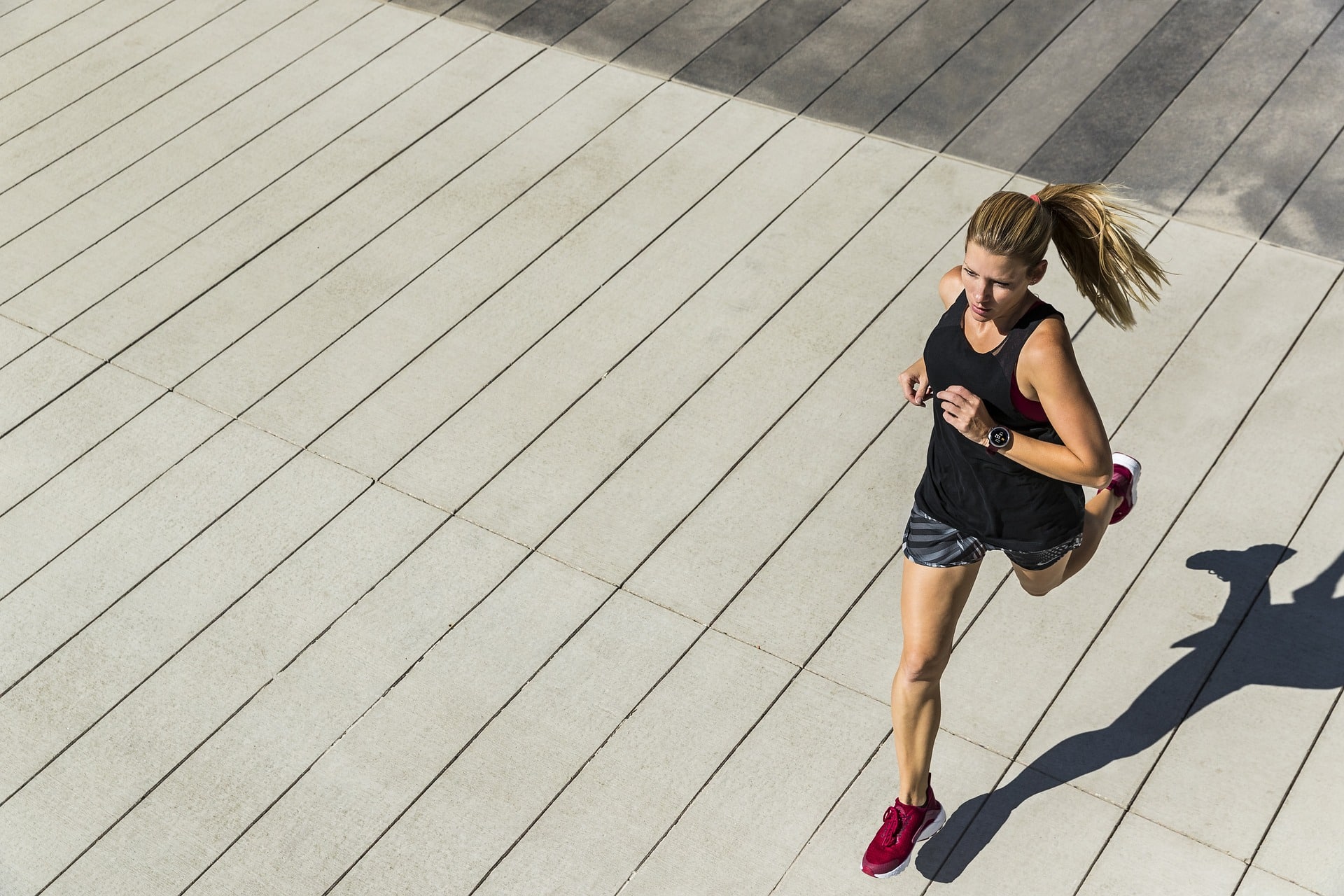High-intensity interval training (HIIT) has gained significant attention in recent years, and for good reason. It’s an effective way to work on your fitness quickly, burning calories and building strength in a fraction of the time you’d spend on traditional workouts (1).
Even better, when bodyweight exercises are used, the barriers of special equipment or gym memberships disappear. Suddenly, fitness becomes something you can do as part of your schedule, in your living room, or even at the park.
Despite its simplicity on paper, HIIT demands a lot from your body, combining short bursts of intense effort with minimal recovery. Without proper form or pacing, it can lead to overexertion or injury, particularly for beginners or those who have specific health concerns.
Here’s everything you need to know to effectively use bodyweight HIIT in your at-home workout routine.
Are Bodyweight HIIT Workouts Effective?
Bodyweight HIIT workouts have notable benefits for various aspects of fitness, health and wellness:
Cardiorespiratory Fitness
Cardiorespiratory fitness refers to the ability of your heart and lungs to supply oxygen to working muscles during sustained exercise. It’s a marker of aerobic capacity, often measured by VO2 max (the maximum amount of oxygen your body can use during intense activity) (2).
Research has shown that bodyweight HIIT can significantly improve cardiorespiratory fitness, particularly in beginners or those who are transitioning from a sedentary lifestyle. The short, intense bursts of work elevate your heart rate quickly, requiring your cardiovascular system to adapt over time (3). In comparison to continuous moderate-intensity exercises, such as jogging, HIIT workouts often provide similar improvements in less time.
Strength and Muscular Endurance
Strength and muscular endurance involve the ability of your muscles to exert force and perform repetitive actions without fatigue. For this, bodyweight HIIT shines when movements such as push-ups, squats, and lunges are incorporated into the routine (4).
Bodyweight exercises engage multiple muscle groups at once, which encourages functional strength. Over time, these compound movements can build muscular endurance, particularly in the core and lower body (5).
While bodyweight HIIT is unlikely to produce the same dramatic strength gains as heavy resistance training (such as lifting weights), it’s practical for developing balanced strength and endurance in everyday contexts.
Beginners tend to see quick adaptations with regular bodyweight HIIT, as these exercises activate untapped motor units (the nerves and muscle fibers that work together) and improve neuromuscular coordination (6). The result? Everyday tasks, such as climbing stairs or carrying groceries, may feel easier.
Fat Loss and Body Composition
For those who are aiming to lose weight or reduce body fat, bodyweight HIIT can be highly effective.
The combination of high-intensity intervals and compound movements increases your calorie burn during the workout and boosts your excess post-exercise oxygen consumption (EPOC). EPOC, which is also known as the afterburn effect, means your body continues to burn calories at an elevated rate as it recovers (7).
Studies have suggested that HIIT can lead to reductions in both subcutaneous (beneath the skin) and visceral (around the organs) fat over time (8). However, fat loss is largely dependent on dietary habits and overall energy balance (9). Bodyweight HIIT alone won’t guarantee results unless it’s paired with mindful nutrition choices.
It’s worth noting that shorter HIIT sessions may burn almost as many total calories as prolonged steady-state cardio (e.g. cycling for an hour), but the efficiency and accessibility of bodyweight HIIT make it an appealing choice for those with tight schedules (10).
BetterMe will shake off your mental funk, rid you of your energy-zapping habits, and help you sculpt the body of your dreams. Intrigued? Hurry up and change your life for the better!
Overall Health Markers
Bodyweight HIIT impacts several key health markers that are tied to chronic conditions such as heart disease, type 2 diabetes, and metabolic syndrome (11, 12).
Regularly engaging in this form of exercise can improve insulin sensitivity (how effectively your body uses blood sugar) and reduce resting blood pressure. These benefits stem from the aerobic and resistance components of HIIT, which work together to promote cardiovascular and metabolic health (13).
While bodyweight HIIT offers significant benefits, caution is advised for individuals with certain health concerns.
The high-intensity nature of HIIT can increase the risk of injury or overexertion if the exercises aren’t performed with proper technique or pacing.
Starting with modified movements and longer rest periods can help bridge the gap for those with lower fitness levels or specific health considerations.
Read more: Beginner Interval Training: The Perfect Start to Your Fitness Journey
What Are the Main Benefits of a Bodyweight HIIT Workout?
Bodyweight HIIT pushes your body to perform at a high intensity for short bursts, followed by brief recovery periods. This structure forces your heart and lungs to work efficiently, improving your cardiovascular capacity over time. At the same time, demanding movements such as squats and push-ups engage multiple muscle groups, boosting strength and endurance (14).
Beyond the workout, your metabolism stays elevated as your body repairs and recovers, burning calories even after you’re finished working out. This combination of aerobic and anaerobic demands creates a uniquely powerful physiological impact.
Essentially, the benefits of this workout include:
- Burn more calories in less time: The high-intensity intervals spike calorie burn during and after the workout thanks to the afterburn effect (EPOC).
- Build functional strength: Movements such as lunges and planks mimic daily activities, which improves your strength for real-life tasks.
- Boost cardiovascular fitness: Quick and intense intervals condition your heart and improve oxygen delivery to muscles.
- Enhance muscular endurance: Repeated bodyweight exercises train muscles to work longer without tiring.
- Improve metabolic health: Regular HIIT has been linked to better blood sugar control and insulin sensitivity.
- Reduce fat, especially visceral fat: The combination of strength and cardio elements supports fat burning, even in the challenging-to-lose midsection area.
- No equipment needed: All you need is your body and a small space, which makes it accessible and travel-friendly.
- Fits into busy schedules: With workouts as short as 15-20 minutes, staying consistent becomes easier.
- Improves exercise adherence: The variety and fast pace keep workouts engaging, helping you stick to your routine.
- Encourages progressive overload safely: You can modify the intensity or complexity of movements as you get stronger, minimizing your injury risk.
This blend of benefits makes bodyweight HIIT a compelling option for those who want maximum results in a time-efficient manner, while also supporting long-term health.
How Do You Structure a Simple Bodyweight HIIT Workout?
For beginners, structuring a bodyweight HIIT workout goes beyond just picking exercises. It’s about creating a rounded routine that prioritizes safety, progression, and effectiveness. Here’s a step-by-step guide to help you get started:
Step 1: Start with a Dynamic Warm-Up
A proper warm-up is non-negotiable. It prepares your body for intense activity by increasing your heart rate, boosting blood flow to your muscles, and improving joint mobility (15). Movements such as arm circles, leg swings, and gentle squats gradually activate key muscle groups, which reduces the risk of injury. Think of it as priming your engine before you hit the gas.
Step 2: Pick Your HIIT Work-to-Rest Ratios
HIIT thrives on balance. To keep the intensity high without burning out, decide how long you’ll work versus rest within each interval. A common beginner ratio is 20 seconds of effort, followed by 40 seconds of rest. This ratio ensures you can maintain proper form and avoid overexertion while still challenging your body. Over time, you might adjust to shorter rest periods as your fitness improves.
Step 3: Sequence Your Movements Strategically
Plan your workout so each interval targets different muscle groups or movement patterns. For example, alternate between upper-body, lower-body, and cardio-focused movements. This strategy will prevent muscle fatigue, let you sustain intensity across intervals, and engage your full body more effectively.
Step 4: Set Your Workout Duration
Beginners should aim for a workout that lasts 15 to 20 minutes, including several rounds of intervals (e.g. 4-6 sets of 5 exercises). This strikes the right balance between providing enough stimulus for results and avoiding physical overload. Remember, as HIIT is intense, even shorter sessions can be highly impactful.
Step 5: Prioritize Proper Form over Intensity
Each rep you perform should be controlled and intentional. Rushing through movements can lead to poor mechanics and increase the risk of injury. Start at a pace where you can focus on alignment and coordination. The intensity will naturally follow as you gain confidence and proficiency in the exercises.
Step 6: Include a Cool-Down to Reset
After the last interval, transition into a cool-down phase with light stretching or slow, controlled movements. This helps gradually lower your heart rate, improves flexibility, and reduces post-workout stiffness. Cooling down helps with recovery and prepares your muscles for your next workout (15).
Step 7: Track Your Efforts and Progression
End each workout by reflecting on how you feel and noting what worked well. Did the rest period feel too long? Were some intervals harder than others? Tracking these details helps you make informed adjustments, ensuring your routine stays challenging and in line with your goals.
Read more: What To Eat Before A HIIT Workout According To The Experts
What Are Some Beginner-Friendly Bodyweight HIIT Exercises to Include?
Below is a sample full-body bodyweight HIIT workout perfect for beginners. Each exercise has been chosen for its ease of execution and effectiveness. The workout is structured to activate different muscle groups, maintain the balance between effort and recovery, and support safe progression. Follow along with the sequence below for a well-rounded session.
Warm-Up
1. Arm Circles
- Stand tall with your feet shoulder-width apart.
- Extend your arms out to the sides at shoulder height.
- Slowly make small forward circles with your arms, gradually increasing the size of the circles.
- After 15 seconds, reverse the direction and make backward circles for another 15 seconds.
This gently mobilizes the shoulders, a key joint that is used in many exercises. It also gets blood flowing to the upper body.
2. Leg Swings
- Stand next to a wall or sturdy surface for balance.
- Swing one leg forward and back in a controlled motion, keeping your core tight and your posture upright.
- Repeat 10 swings per leg, then switch sides.
Stretches and warms up the hip joints and legs, preparing them for dynamic movement.
Main Workout
3. Bodyweight Squats
- Stand with your feet shoulder-width apart and your toes slightly turned out.
- Lower your hips, bending your knees until your thighs are parallel to the floor, as if sitting into a chair.
- Push through your heels to stand back up, keeping your chest lifted and your core engaged.
- Perform as many repetitions as you can in 20 seconds.
Squats target the quads, hamstrings, and glutes, which makes them a pillar of lower-body strength.
4. Push-Ups (Knee or Full)
- Start in a high plank position with your hands slightly wider than shoulder-width and your body in a straight line.
- Lower your chest toward the floor by bending your elbows.
- Push back up to the starting position.
- Modify by dropping to your knees if needed. Continue for 20 seconds.
Push-ups activate the chest, shoulders, triceps, and core, building upper-body strength and stability.
5. Glute Bridges
- Lie on your back with your knees bent and your feet flat on the floor, hip-width apart.
- Press through your heels as you lift your hips toward the ceiling, forming a straight line from your shoulders to your knees.
- Lower back down slowly and repeat for 20 seconds.
Strengthens the glutes and lower back, which are key players in preventing injury and maintaining proper posture.
6. Plank Shoulder Taps
- Start in a high plank position with your hands directly under your shoulders and your body in a straight line.
- Lift your right hand and tap your left shoulder while keeping your hips steady.
- Return to the plank position and repeat with your left hand touching your right shoulder. Continue alternating for 20 seconds.
Builds core strength and stability while challenging your coordination.
7. Reverse Lunges
- Stand tall with your core tight and your hands on your hips.
- Step back with your right foot, lowering your back knee toward the ground while keeping your front knee aligned over your toes.
- Push through your front heel to return to standing, then switch sides. Continue alternating for 20 seconds.
Engages the quadriceps, glutes, and hamstrings while improving balance and coordination.
8. High Knees
- Stand with your feet hip-width apart.
- Quickly drive your knees up toward your chest one at a time, pumping your arms as you move.
- Perform at a steady, fast pace for 20 seconds.
This cardio move elevates your heart rate while engaging your core and hip flexors.
BetterMe is your fast-track ticket to long-lasting weight loss! Tailor your fitness journey and maximize your results with just a couple of swipes!
Cool-Down
9. Cat-Cow Stretch
- Start on your hands and knees with your wrists under your shoulders and your knees under your hips.
- On an inhale, arch your back, lifting your head and tailbone (cow pose).
- On an exhale, round your back, tucking your chin and tailbone (cat pose).
- Alternate these movements slowly for 30 seconds.
Releases tension in the spine and resets your posture after the workout.
10. Standing Hamstring Stretch
- Stand tall and extend your right leg forward, resting your heel on the floor or an elevated surface, with your toes pointing upward.
- With a straight back, lean forward slightly over your extended leg until you feel a stretch along the back of your thigh.
- Hold for 15 seconds, then switch to the other leg.
Helps lengthen and relax the hamstrings, which can feel tight after dynamic lower-body movements.
How Quickly Can You Build Endurance with Bodyweight HIIT Workouts?
Building endurance through bodyweight HIIT workouts leverages the body’s ability to adapt to repeated bouts of high-intensity activity. Endurance primarily improves through cardiovascular and muscular adaptations, which take place over weeks of consistent training (16).
When you perform HIIT, your heart and lungs are challenged to deliver oxygen more efficiently to your working muscles. This process, which is known as cardiovascular conditioning, starts to improve within the first few weeks. Studies have suggested that noticeable changes in cardiovascular fitness, such as increased VO2 max (your body’s ability to use oxygen), can occur within 4 to 12 weeks of regular HIIT training (17).
On a muscular level, HIIT stimulates the production of mitochondria, which are often referred to as the “powerhouses” of cells. Mitochondria play a critical role in energy production during prolonged activity. With frequent HIIT sessions, your body gradually increases the number and efficiency of mitochondria, enhancing how long your muscles can sustain effort. These adaptations can start within a few weeks but take about 6 to 12 weeks for more significant improvements (18).
In addition, HIIT improves your anaerobic capacity, or your ability to perform intense activity without relying on oxygen. This process involves your muscles becoming better at handling lactic acid buildup, which delays fatigue during demanding workouts. These gains can start in as little as 2 to 4 weeks of consistent HIIT (19, 20).
How quickly you build endurance depends on factors such as workout frequency, intensity, and your baseline fitness level. For beginners, engaging in bodyweight HIIT 2 to 3 times per week is typically sufficient to see measurable results within a month or two. However, the most dramatic improvements often come within the first 2 to 3 months as this is when the body adapts most rapidly to a new training stimulus.
Yes, HIIT can help reduce belly fat by boosting your overall calorie burn and promoting fat loss, particularly visceral fat. Studies have shown that the high-intensity intervals in HIIT increase metabolism and encourage fat burning even after the workout is over (the “afterburn effect”) (21). However, fat loss requires a calorie deficit (22), so combining HIIT with a balanced diet is essential. Yes, you can build a lean and muscular physique with bodyweight exercises if you combine them with proper nutrition and consistent training. Bodyweight exercises such as push-ups, squats, and planks develop strength and define muscles by targeting different muscle groups (4). Progression, such as adding reps, sets, or advanced variations, is the key to maintaining muscle growth over time. HIIT can temporarily boost testosterone levels, particularly in men. Short, intense workouts stimulate the release of anabolic hormones like testosterone (23). However, this effect is usually temporary, and long-term testosterone levels depend on factors such as overall activity levels, sleep quality, and stress management. It depends on your goals. HIIT is more time-efficient and can improve cardiovascular health, endurance, and muscle strength in shorter sessions. Running, particularly steady-state running, is better for building aerobic endurance and can be more sustainable for longer durations (24). Both are effective forms of exercise, and incorporating both can provide well-rounded fitness benefits.Frequently Asked Questions
Does HIIT burn belly fat?
Can you get ripped with bodyweight exercises?
Does HIIT increase testosterone?
Is HIIT better than running?
The Bottom Line
Bodyweight HIIT workouts are an accessible and effective way to improve your fitness, torch calories, and build endurance. With no equipment required, they’re perfect for beginners or anyone who is looking to fit a powerful workout into a busy schedule. These workouts enhance cardiovascular health and muscular strength and promote fat loss and long-term fitness adaptation when done consistently.
DISCLAIMER:
This article is intended for general informational purposes only and does not serve to address individual circumstances. It is not a substitute for professional advice or help and should not be relied on for making any kind of decision-making. Any action taken as a direct or indirect result of the information in this article is entirely at your own risk and is your sole responsibility.
BetterMe, its content staff, and its medical advisors accept no responsibility for inaccuracies, errors, misstatements, inconsistencies, or omissions and specifically disclaim any liability, loss or risk, personal, professional or otherwise, which may be incurred as a consequence, directly or indirectly, of the use and/or application of any content.
You should always seek the advice of your physician or other qualified health provider with any questions you may have regarding a medical condition or your specific situation. Never disregard professional medical advice or delay seeking it because of BetterMe content. If you suspect or think you may have a medical emergency, call your doctor.
SOURCES:
- Evidence-Based Effects of High-Intensity Interval Training on Exercise Capacity and Health: A Review with Historical Perspective (2021, ncbi.nlm.nih.gov)
- Health-Related Fitness Measures for Youth: Cardiorespiratory Endurance (2012, ncbi.nlm.nih.gov)
- A Perspective on High-Intensity Interval Training for Performance and Health (2023, link.springer.com)
- Bodyweight Training for Muscular Strength & Endurance (2022, researchgate.net)
- Bodyweight Training: A Return To Basics (2010, journals.lww.com)
- The Role of High-Intensity Interval Training (HIIT) in Neuromuscular Adaptations: Implications for Strength and Power Development—A Review (2025, mdpi.com)
- EPOC Comparison Between Resistance Training and High-Intensity Interval Training in Aerobically Fit Women (2021, ncbi.nlm.nih.gov
- Effect of High-Intensity Interval Training on Total, Abdominal and Visceral Fat Mass: A Meta-Analysis (2017, link.springer.com)
- The Human Energy Balance: Uncovering the Hidden Variables of Obesity (2025, mdpi.com)
- Effect of High-Intensity Interval Training vs. Moderate-Intensity Continuous Training on Fat Loss and Cardiorespiratory Fitness in the Young and Middle-Aged a Systematic Review and Meta-Analysis (2023, ncbi.nlm.nih.gov)
- Impact of combined high-intensity bodyweight interval training and breathing exercise on cardiometabolic health in normal-weight middle-aged adults with hypertension (2025, biomedcentral.com)
- Narrative Review of High-Intensity Interval Training: Positive Impacts on Cardiovascular Health and Disease Prevention (2025, ncbi.nlm.nih.gov)
- Efficacy of high‐intensity interval training in individuals with type 2 diabetes mellitus: An umbrella review of systematic reviews and meta‐analyses (2025, onlinelibrary.wiley.com)
- The effect of six-week bodyweight high-intensity interval training on the performance of young female athletes (2024, researchgate.net)
- Warm Up, Cool Down | American Heart Association (2024, heart.org)
- Adaptations to Endurance and Strength Training (2018, ncbi.nlm.nih.gov)
- Effects of different protocols of high intensity interval training for VO2max improvements in adults: A meta-analysis of randomised controlled trials (2019, pubmed.ncbi.nlm.nih.gov)
- Physiological Responses to Low-Volume Interval Training in Women (2021, sportsmedicine-open.springeropen.com)
- Six high-intensity interval training sessions over 5 days increases maximal oxygen uptake, endurance capacity, and sub-maximal exercise fat oxidation as much as 6 high-intensity interval training sessions over 2 weeks (2021, sciencedirect.com)
- Effects of Four Weeks of High-Intensity Interval Training and Creatine Supplementation on Critical Power and Anaerobic Working Capacity in College-Aged Men (2009, journals.lww.com)
- The Effect of High-Intensity Interval Training Type on Body Fat Percentage, Fat and Fat-Free Mass: A Systematic Review and Meta-Analysis of Randomized Clinical Trials (2023, ncbi.nlm.nih.gov)
- Optimal Diet Strategies for Weight Loss and Weight Loss Maintenance (2020, ncbi.nlm.nih.gov)
- HIIT produces increases in muscle power and free testosterone in male masters athletes (2017, ncbi.nlm.nih.gov)
- Effect of steady-state aerobic exercise intensity and duration on the relationship between reserves of heart rate and oxygen uptake (2022, ncbi.nlm.nih.gov)
